Help needed to revive sick Xanthorrhea grass tree
I picked up a quite large sick Xanthorrhea (150cm) (not sure what species) that was surplus to its previous owner's requirements. It has only about 20 green leaves at the top. The previous owners said they had given it some salt but had given up trying to nurse it back to health.
Does anyone have any tips for reviving it? For example, should we chop back the green fronds and wait for them to reshoot, or would it perhaps respond better to a solid burn? I understand they do not respond very well to feeding. I plan to plant it out in some sandy soil (the potting mix it came with seems a bit rich and damp, which I understand is not ideal). When I plant it, would it be best if it had full sun all day while it is recovering, or will strong afternoon sun only be adequate, or should it be shaded for a while?
Any tips would be appreciated.
Comments (71)
Anne_Tum
Original Author19 years agoBummer
Hope it comes good. These things seem to go at a fairly glacial pace so I wouldnÂt give up yet.
We still haven't burnt ours and it still hasn't improved particularly much. At least you gave it a go, we just sat there.
Tim
greyim
19 years agoNo one seems to have mentioned Phytopthora root disease, to which I believe grass trees easily succumb. After which changes in water, pots, soil have little effect...
Treatment with commercial fungicide may help reduce the problem, but this would hurt micorhiza too I expect.Related Professionals
Riverside Architects & Building Designers · Yeadon Architects & Building Designers · Alabaster General Contractors · Athens General Contractors · Berkeley General Contractors · Bon Air General Contractors · Nashua General Contractors · Norman General Contractors · Signal Hill General Contractors · Walnut Park General Contractors · Fernway Interior Designers & Decorators · Beachwood Landscape Architects & Landscape Designers · Birmingham Landscape Architects & Landscape Designers · Otsego Landscape Architects & Landscape Designers · Signal Hill Landscape Architects & Landscape Designersmoreton
19 years agoHi All,
one of the only suggestions i can give is to mix 1/2 cup of brown sugar with 5 litres of water and slowly add to root zone once a year. I think to many grass trees die because of overwatering in the domestic garden situation. The old brown sugar theory seems to work in most cases as it helps feed the fungi and spores that make the nutrients for the roots to feed the plant.If you are moving your potted grasstree you could help it by situating it in the same N,S,E,W, position as it may stop it sulking as well.
Good luck. Peter rvonlang
19 years agoI transplanted 12 last year from my building envelope.7 died & only 5 survived. I burnt them after transplanting & cut them back.Watered regularly in summer.They are difficult. Put it in the ground & take your chance.Best in soil similar to where they come from.
vonlang.feinrak
18 years agoHi,
I have enjoyed this discussion on Grass Trees. We are building a new home, and trying desperately not to move any of the trees and shrubs on the plot. We have one Grass Tree which will have to unfortunately be relocated. Can anyone give me some advise on what precautions we can take to ensure it's survival if we relocate it to another area of the block. The block is sandy on the sunshine coast. Currently the Grass Tree is surrounded by low grass and lots of sunlight.
Thanks
Fionajan_uk
18 years agoHi Fiona, Some years ago I was the head gardener for a large private estate in Cornwall in the UK. It was necessary to move 4 X 15' mature Irish Yew trees in late spring. The trees were sprayed with a dilute solution of PVA glue. 1 part glue to 10 parts of water and sprayed over the top of all the foliage. It is important not to completely seal the underside of the leaves as it is necessary that a little transpiration continues. The whole idea is just to stop the plant losing more moisture from its foliage than the damaged root system can take up. The PVA dries clear and eventually peels of the foliage (and doesn't look unsightly at all). When digging up a plant it is difficult not to damage the root system to some extent, even if one is very careful. If the plant is shrubby and a 'leader' is not important, then a hard prune will reduce the stress on the damaged root system by cutting down on the loss of this water through transpiration (having the same effect as spraying with the PVA). Three out of these four trees survived through a hot dry summer and were flourishing 4 years later when I left. The one that died had a severely damaged root system due to a careless excavator driver! Since then I have used this method many times over the years on my nursery and during landscaping contracts. There is a very expensive product that you can buy in the UK marketed as an anti-transpirant: It is white, smells like PVA, looks like PVA, sticks wood together and it cost my old boss about 60 pounds sterling (roughly $200) for 5l. Was it PVA? - I have no doubt. My old boss was in the Sunday Times 200 wealthiest every year so I had no conscience about persuading him to part with his money either! Especially as he was normally pretty tight fisted anyway! Hope this is of some help - if you have any doubt, experiment on some scrubby weed species first!
Good luck
Cheers Janrice_david_au_sika_com
17 years agoCan anyone advise how to best go about a 'burn' for a grass tree, do you wrap the whole trunk in paper or pile it around the base, and how much would you use - a whole newspaper? Is there any need to try and protect the green foliage while burning?
trish_g
17 years agoThe history of Anne's grasstree suggests that it was an attempted illegal transplant that became an embarrassment. Oh, the poor sick thing!
I'm delighted to hear that the mysterious count d is always right. However I suspect that, being in England he rarely has to deal with grasstrees rip't untimely from their mother earth.
I got a plant like this once (from a reputable nursery, so I won't reveal its name - we all make mistakes, and they gave me my money back). I knew it had a shady past, though, because of the absence of the little ticket with the license number. It took a year to die, slowly. Investigation proved that it had had half the trunk buried in the pot to give it stability. What little root these was, was at the very bottom.
The story that grasstrees grow very very slowly - an inch in 100 years - is a British one, based on measurements made in the Edinburgh botanic gardens!! I've seen 2 metre high ones on the inside of a railway cutting made in 1906.
The burning process is good for mature plants, to stimulate flowering.I do wonder whether a dose of wood ash about the base would have the same effect.Maybe even just a bit of boring old Bloom Booster, or some other high potassium fertiliser would do the trick, but it wouldn't be nearly the fun! The burn is VERY important for the aesthetics, though. How else could we have that wonderful black trunk?
Keep us posted, Anne
Trishgrahamgreenfingers
17 years agoHello all you grass tree lovers,i have read my way through all the postings with great intrest,i am based in england ,north london ,my passion for grass trees began in 2004 when i came across two jhonsoniis in a charity run garden centre ,you could say thay had seen better days,my frend who was with me at the time told me not to bye them,but ofcorse i couldnt help my self,probbaly because thay were only £20 each,for 12 inches of trunk on each ,i thought it worth the risk and i am told that jhonsonii have a bad survival rate in england.on ariving back home i smugled them into the back garden so my wife did not see them,thats how bad thay looked,once i had found a nice sunny spot i set about planting them in the ground,because my knolage of grass trees at this time was non existant, so i relied on my gardening instints ,i decided to feed one with fish,blood and bone+chicken pellet and the other with nothing just to see what happend afterall i hadent payed a large amount of money for them so i could experment,this was in july 2004,thay did absoultley nothing for 6 months untill feb 05 when to my amazement thay boath started to projuce a thick head of new grass the one that i fed even more so ,so this encouraged me greatley to find out more about thease amazing plants on my travles through different sights i discoverd a welth of infomation ,i also discoverd the real price of thease plants,wich leads me to beleave that generally people tend to fuss to much over there grass trees because of the money? however i know in austraila thay are much cheeper,you lucky so and sos,so as my two jhonsoniis have growen ,so has my obsession to onwe another one ,only it is now nion impossible to bye jhonsonii in england because of its survival rate, the only grass tree avalble here now is the glauca wich has a much better survival rate, i took the plunge in may this year and brought a glauca at 1.4m , due to the knolage i had now i set about prepairing a raised free draining bed with a medium designed by myself with a number of ingreadents,and i must say the plant has gon from strength to strength,i tryed to forget that the plant cost £450 pounds my most expensive plant, untill i came across a GIANT it realy was love at first sight,apparentley one of the chealse garden show grass trees used for the australin stand, there were five to chose from ,all totaly breath taking, i chose a multi head with three heads comeing from one single trunk wich is probbaly almost three times thicker than my onw waist,wich is 32 inches,i cannot display the price ,you will all think ive gon mad,however i take delivery tommorw afternoon,carnt wait,ill let you all know how i got on with my new arival ,one thing is for sure ill never smugel this one in.
trish_g
17 years agoHooray for you, Graham. Never let it be said that we gardeners lack a sense of proportion! You clearly understand the important things in life!
Trishgrahamgreenfingers
17 years agoWhy thank you trish,i would realy like to post some pictures of the grass trees that i have ,and the ones that i have come across especally the ones used for the chelsea show,i have seen many pictures of thease wonderfull plants but nothing like thease,im dieing to show other grass tree lovers what i have seen,if anyone is intrested please feel free to email me at grahamgreenfingers@hotmail.co.uk.
grahamgreenfingers
17 years agoIs there anybody who could advise on identifeying different species of grass tree in particular xanthorrhoea pressii ,does anyone know a good web site?
cadiz
16 years agoGoogle got me to you all and I too would appreciate some help.
I am concerned about burning due to the close proximity of mature palms and cyads and yuccas.I have three Xanthorrhoea glauca planted 2 years ago in full sun in southern most Spain. The soil is from the marshlands in Valencia... 5 tons came with the palm trees... Two Xanthorrhoea glauca are fantastic with a constant abundance of new leaves and very upright, but one has had rotting central leaves... one day 4 months ago out of sheer frustration whilst discouraging visiting desert locusts from gorging on palm tree foliage with homemade 20% neem oil spray, I pulled the affected mushy leaves out (about 30 leaves) and tipped neem oil onto the central affected area... bad temper indeed... BUT the rotting stopped. Now the site is now hard and clean and tightly closed. Still no new growth though. The plant is green and looks good enough to eat, but it appears `flat´ having no new growth for 6 months- shame- I suspect that I should blame myself for inadequate watering as the nearby date palm was showing signs of drought. It has now improved by liquid food and deep watering...
I want to try the brown sugar idea and was thinking about sprinkling Micorrhizal fungi carefully on the huge roots... any thoughts... please...cadiz
16 years agoHi Grahamgreenfingers... how DO you do that? mine are always black and grubby... he-he!
sorry.the site I truly love to read is this one...
http://www.bihrmann.com/caudiciforms/subs/xan-gla-sub.asp
and there is www.mulu.co.uk
http://www.mulu.co.uk/plant_info.php?id=991
Xanthorrhoea preissii
Common Grass Tree
Although common to Western Australia, X. preissii is extremely rare to cultivation in Europe. It is probably the hardiest grass tree to frost and is much bigger than X. glauca and X. jonsonii, its wide trunk giving it a particularly spectacular appearance. It is also tolerant of drier conditions than other grass trees.http://www.mulu.co.uk/plant_info.php?id=656
Xanthorrhoea glauca
Australian Grass Tree
A rare form of grass tree with glaucous blue/green leaves. It's similar to X. jonsonnii, up to now the most commonly seen Grass Tree, and just as slow growing, but happily seems to be easier to grow. Despite rumours to the contrary it needs plentiful water, and benefits from full sun. Will withstand some frost,trish_g
16 years agoI think I am pleased that at last this thread is beginning to discuss the differences between grasstree SPECIES! Isn't it frustrating that nurseries here in Australia sell grasstrees, often labelled Xanthorrhoea, but without offering us the courtesy of the specific name! This does matter, as they differ a lot from each other. Some are big, some small. Some form trunks while many spend all their lives sitting like a pom-pom on the ground.They are not slow growers - this is how they're MEANT to be.
Cadiz, X. glauca is native to my part of Australia (the Darling Downs in Queensland), and is not at all rare here. It differs from X johnsonii (also native in this area) in being a plant of the heavy clay blacksoil plains, which may be why it's loving your marsh soil. X. johnsonii grows on the better-drained (but still clayey) hillside soils. (Other species are native to sandstone, granite, or sandy coastal soils)
I think X. glauca would happily withstand periods of waterlogging (it grows on creek banks in places where floods that break the banks and spread for miles are the norm). However it may also want to be allowed to dry out very thoroughly between times. It is quite normal for us to have no rain at all, and (VERY low humidity) for well over a month in winter.
I am fascinated by your neem cure. I've never heard before of a tree being cured of that kind of central rotting.
X. glauca would also be subject to some sharp frosts every winter in its natural habitat,(but snow is a once in 25 year event).
We Australians like to burn our grasstrees for the sake of their good looks (the attractive black trunk) but it's not necessary for their health, and is not done by the thousands of people who grow them in the suburbs in Australia.
Trishgrahamgreenfingers
15 years agoHi all
been of line for ages just following up the last post
is there any body out there?denise_2008
15 years agoHi Graham
Just found your post. Spoke to you almost a year ago now about my sick Xanthorrhoea here in Essex. It had been sick for about 10 months, leaves were brown and dying, nothing happening and I was almost resigning myself to losing it when in May this year I spotted a sign of new growth in the centre. I had treated it with two things - a solution of brown sugar and also a solution of soluble endomycorrhiza (which I had found out is the type of fungus the roots form associations with) Whether these things helped or whether it would have done this without these I don't know but I am pleased to say there is now plenty of new growth, it's now in a raised bed and with three others!!(thanks for advice re planting out, looking good so far, fingers crossed, winter cover being built this weekend!)lippies
10 years agograss tree basically just like to be left alone,you will hear a lot of old tales,like feed them sugar,etc,dont do anything to them but they must be in a spot they like or they will slowly die,put them on a sandy mound with some fine gravel and a touch of home made compost,they wont survive long in standard potting mix either,just put them in the ground away from boggy clay soil,they will die in you put them into clay soil with nothing else.
funnelweb
10 years agoWell given that this discussion began just over 10 years ago now, Ann_tum, did the grass tree that had been dosed with salt survive? What treatment did you give it, did you try a burn? I'd be interested in how it all panned out.
Regards
F.lenno
10 years agoThis link may help. Replant is a company who 'rescue, for a price, grass trees in bush about to be developed. They have a huge survival rate.
http://www.replants.com/planting-and-care/grass-tree-heath-care
Good luck.r_battistella
8 years agoCan someone tell me what is wrong with my grass tree?
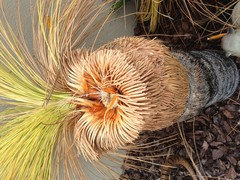
The fonds were falling out in clumps! I think the trunk has a disease?
Rosemary
imyourhuckleberry
8 years agoI have transplanted many Grass Trees. It can be a bit of a lotto but there is ways to increase the odds in your favour.
Planting from a pot has a much better survival rate than from the ground. This is because its much more likely to damage or cut the roots. They hate this, it will literally decrease the survival chances in half, half of the 50% you started with.
Firstly, make sure you take a large amount of soil from around the roots. This is to keep as much of the microb's as possible. Secondly there is a large root stem that drills down, try and get this without it being damaged. It will be easier in sandy soil. Cutting this deep water stem could be certain death.
Now, re planting. Make sure the soil is a similar match to where the tree was removed. It must be well drained soil. A good tip is to dig the hole first and fill it with water. See how well it drains away. If it doesn't then you can still plant it there but just use some other draining techniques.
Once its in the ground, support it if its tall in order that the root system can get underway. If its not firm in the ground it will take longer to root.
Nutrients. Okay i have an old school tip, dissolve brown sugar in a large bucket of water, once every six month should be fine. This is because the microb's that live in the root system are suppose to enjoy this. Other nutrient solutions include seasol or similar product once a month until established.
Water is very important. At least once to twice a week in summer. Southern Australia would need more due to its dryer climate compared to say Northern Australia. So you might Water once per week in the North vs twice in the South. Scratch the topsoil, if its dry then water, if its damp then maybe leave it a few more days. Deep watering is needed. I would suggest 30 - 50 litres when you water.
Remember these trees are slow growing. Don't expect big results quickly. For example i have read some comments above about burning. It could take around six months before new leaves could show after a burn. Also if the tree is already stressed i would not suggest burning unless you think based on what you see that its not going to make it anyway. Then as my old mate always says, try it and see...
count_d
8 years agoYep, the legendary count_d is back. I'm still alive and I hope everyone else is. What's been fascinating over the years, is just how much more knowledgeable and mysterious I've become. What have I learnt over the years? Well Xanthorrhoea don't like -15c. I unfortunately lost mine in the bad winters we had here in the UK. Since the ban on importing them, they've become incredibly hard to find again. Shame. In 8 years time, I suggest we all meet up somewhere in the world to celebrate a 20 year thread anniversary. Yes it would be interesting to find out how Anne's Xanthorrhoea is.
willx2
7 years agoLots of good information in this thread. I'd wholeheartedly agree with the notion that transplanting these plants can be a bit of a lottery. We live in Perth where these grow readily. We paid top dollar to a reputable company who planted a 1 metre specimen for us. We have optimum conditions and have followed their instructions to the T... Sadly it struggled from the start and although we seem to be prolonging it's death I can't see it surviving long term. Of all the natives I've transplanted this is is the only species I've had problems with. With hindsight I wish I'd bought 3 smaller cheaper specimens from gumtree and seen which ones thrived.
imyourhuckleberry
7 years agoWow already heaps of comments. Get boiling water and dissolve a good couple of handfuls of raw brown sugar then fill it with six litres of water. The microbs in the root system feed off the sugar. Do this once a month for the next 12 months. Make sure you watering it lots in well drained soil. Like 40 litres twice a week. Once a week in winter. Try burning it by wrapping news paper around the stump with string to hold it on. See how you go. It likely won't make it if it was transplanted to the pot and is already suffering. If it was always potted its chances are quite good. Ps where are people getting this idea about salt? No salt my friends and no seasol. Nurserys and plant stores are not experienced in these more
rare trees and for some reason recommend seasol.
#1 Assassin
7 years agolast modified: 7 years agoMy black boy got fungus rot though they say once they have it there no way back though my tree was in a pot it go waterlogged an I didn't notice as it is placed in a retaining wall half buried though it was to late i noticed the crown was yellow and the fronds could be pulled out easily knowing it got crown rot. Now my only hope is for it to dry out given it some seasol/Molasses pulled the pot out and drilled some holes of the large pot so air could dry it and have currently have back burned it use of a propane torch flamethrower to stimulate growth. It would be sad if it is completely dead but iam keeping it for the time being if no growth for a 6month to a year than i know its dead an will need my chainsaw to chop it down.
d_inferrera
7 years agolast modified: 7 years ago
Hi every one
I'm thinking of purchasing some Grass tress to plant in my garden
the soil contains of Clay & Shale
land slopes
weather
in summer will reach + 40'c
winter - Zero
i live in Camden NSW AUSTRALIA
many help would be much appreciated
Thank you
Email d_inferrera@outlook.com
#1 Assassin
7 years agolast modified: 7 years agoFrom experience your quiet lucky as you have a slope where you will pot the tree water will still run off underneath an will never sit an pool as water will always fall down gradient so your drainage is perfect for the grass trees. All you need is to purchase your grass tree's. If you want small ones that are small go to Bunnings but have different sizes they wont stock the bigger ones though if you want the big ones you might need to look for a wholesaler nursery there are a few in Sydney, flower power I seen afew though $$$ just be vigilant if you do decide to purchase the bigger plants 1metre an above or double head trees be careful you don't get it stolen as a lot of people are aware these are prized species and the big ones are the $$$ smaller ones 40-50cm I don't think there worth stealing but the big ones yes. Or have light sensors or put white or peach gravel to deter thieves as it causes to much noise when they stepping on the gravel.
willx2
7 years agoI tried the sugar trick / backed off the use of seasol and pruned off most of the crown. Now my sickly grass tree appears to be improving. It's been in the ground for almost 2 years now so I'm hoping it's root system will have developed enough to survive. We're heading into autumn so will allow nature to do the watering for the next 6 months.
As an aside i was driving through one of Perth's southern suburbs the other day where they are transplanting hundreds of grass trees along verges and median strips. The landscapers appear to prune the crowns entirely when they first drop them in.#1 Assassin
7 years agoYeah I gave my tree away for free on gumtree, I think it got attack by Phytophthora cinnamonni root rot which is very common with this tree get to waterlogged luckily my other 3 are good. Yeah I heard they prune it down to minimise transplant shock and I guess you wont have the fronds poking your eyes out.
alison_woodley
7 years agoI have a beautiful grass tree which flowers every year. Usually a minimum of 6 flowers or more. It always throws it seeds and more plants come. I have potted and replanted several and several have not grown. I've left self sown/sewn ones in situ and they thrive.However I was extracting couch from it and noticed there was heaps of dead fronds underneath. I could pull a lot out. I can't burn it as it's too close to the house. I lost another tree several years ago. It's had a fungus and even burning it didn't help. Should I do anything about the dead stuff? It's a multitrunked plant in the ground for al least 17 years. Thanks
imyourhuckleberry
7 years agoHey Mate, you can get a spray. I would look to burn it and put some alfoil sheets against your house to protect it. Water down the house before you light the tree and also you can fill the gutter with water by blocking the down pipe
#1 Assassin
7 years agoIf the middle crown is easily pulled out than your tree is pretty much dead if the other trunk is still putting out green fronds in the middle might have a chance. I burnt mine as well but it was dead already crown rot. Grass tree biggest enemy is phytophthora cinnamomi if you read about it in relation to grass trees its there number one killer my grass tree has been killed by this though waterlogged grass tree is the problem. Best thing I'm going to do in spring is spray rid a rot Sharp shooter fungicide the product i have or yates anti rot they say they give this in grass trees down in Canberra and areas of Victoria as there were mass loss of grass trees due to this incurable fungus its usually spread via 4x4, bush walking, in soil, so it can easily be spread. Using the product actually boost your tree immune system to fight the fungus even though will need to be reapplied every 4-6weeks during the growing season as I think it only when there is a lot of humidity will it thrives more than Autumn an winter.
There is a organisation https://www.dwg.org.au/treatment that assist with injecting trees with this phosphite solution. But with grass tree must be only spray onto the leaves.
Hope your tree survives
bert29
6 years agoBert in Florida here. Visited oz and had to have my own grass trees. Have two. Both over 20 years old and very happy. One currently has a flower spike underway.
The second has over 18 inches of trunk and has begun to branch. I think it’s a blue or silver. Not sure
Im thinking it’s time to burn. But I have been very reluctant. Would be my luck to have the only type that should not be burned.
Question. Are there species which should not be burned? Or do I light it off and pray?
HU-865523212
5 years agoHi Everyone, I have four grass trees. I began with one, then one sprouted, and over the past 15 years two more baby ones shot up in the last two years. They are all planted in a small area I gravelled and next to my hot water tank. I've never done anything to them except in the very hot summer here in Australia watered them a little. I didn't know how to care for them really. When the skirt became dark brown I was worried what might be living in the dead fronds, I took to them with shears and cut back all the dead ones, it too awhile. The beautiful trunks appeared and look wonderful. However, I'm not sure if I should trim the long green fronds and leave them spiky looking, or just continue the way I have gone before?
It's difficult to tie up the green fronds as they are so long and back-breaking cutting the dead fronds underneath and it's difficult to get them as short as some of the photos I've seen on the internet.
So, can anyone give me advice on whether to keep the top fronds so they look spiky or leave them as naturally grown? And secondly, should I persevere and keep trying to cut back as close to the trunk as possible.
I am a bit scared to burn anything as they are close to neighbour's fence, and my kitchen wall. They are beautiful to look at arn't they when trimmed back to the trunk?
The shoots bearing the flowers are sometimes annual other times longer, the birds love them.
I hope I gert a reply or two in 2018 as this has been going since 2004! And, I'm not getting any younger.
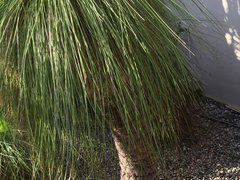

imyourhuckleberry
5 years agoHi Mate,
yes keep going the way you are. Mix brown sugar in a bucket say two large handfuls and water the dissolved sugar in at the change of season.
secondly, get a rip tie and lift up the fresh leaves to hold the leaves sticking up. Then you can get in closer easier to cut of the old leaves to the trunk. Do not burn as you have said there is more reasons not to then there is any benifit to burn.
matt
HU-865523212
5 years agoHi Matt, Thanks for your prompt reply with advice. I can see that this will make cutting back close to the trunk much easier. I will trim the longer leaves that are now dropping and as you suggest tie up the fresh leaves out of the way and that will enable me better access to tidy up the trunk. Margaret
imyourhuckleberry
5 years agoNo worries, check out his link for some extra info
http://www.abc.net.au/gardening/factsheets/grass-tree/9426588
HU-376471060
5 years agoHi everyone,
I recently purchased a grass tree that is over 2m tall from Gumtree, the owner didn’t want it anymore so I decided to try and transplant it.
I was able to save most of the roots and a small amount of soil, I burnt it and cut back all the foliage.
I really hope it survives as it’s a beautiful Plant.
The trunk is quite thick - How old would it be?
Thanks Andrew
imyourhuckleberry
5 years agoHi Andrew, how deep did you dig? Burning and pruning can put the tree under more stress when it’s been transplanted. I wouldn’t do that for the first 2 years. Additional to this, the leaves are an indicator for how the tree is doing. So without this your missing a vital signal point for the tree. But all that said, you chances are less than 10% to transplant from soil to soil. It’s much higher from pot to soil. It’s all about the main root which you we’ll have seen. If that is cut or damaged then it’s very very unlikly. They die slowly, over a year. Did you dig deep and use a sandy loom to put it in? They require good deep drainage.
Keep a reasonable amount of water up. Never use sea sol. That harms the bacteria. Mix warm water with sugar. Let it cool and dissolve and poor it over the root system. The bacteria will enjoy the hit. If you didn’t get a lot of the soil then there may not be much bacteria left. Good luck!
HU-376471060
5 years agoThe root ball was entirely entacked and the large root was far too deep to remove without cutting unfortunately. To fit the entire root ball into the ground the hole needed to be around 1m deep.
I‘ll try the sugar and hope this helps..imyourhuckleberry
5 years agoAs the grass tree grow at around 1-2cm a year that tree must be close to 100years old by the looks of it. I hope she makes it mate!
HU-527673641
4 years agolast modified: 4 years agoHi everyone, as I have been reading above many of you have plenty experience with grass trees. I love them and recently got this this one. We pulled it out of the ground and transported it to our place. It was a big bush you couldn’t see the trunk. We burnt it back and then Planted it. It’s been 3 months and it looks like it’s dying or sick. I touched one of the heads on the trunk just now and it came off easily with my hand. Can anyone help me or advise me what I should do. Clearly from reading above I have moved the tree without thinking about it and doing it cautiously. I thought they were tough and if they could stand reliving after a bush fire they could survive anything. Help me please

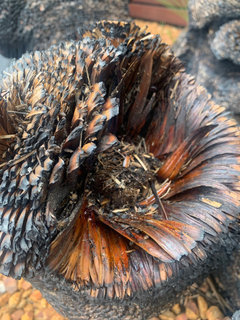

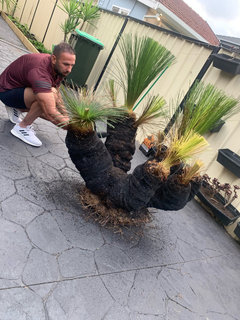
imyourhuckleberry
4 years agolast modified: 4 years agoHi mate - looking at the bottom photo this tree has no chance. The root system has been completely smashed. It will die slowly as there are no microbes around the soil, or no soil contained from the original ground containing soil. This has been moved in the worst possible way. Besides soil the main artery root should try not to be devoured. It looks very old, I would say at least 100 years. Burning should never be undertaken unless the tree is healthy. It looks like it has been rushed out of the ground Of a natural environment.
HU-527673641
4 years agoYeah it was, my mate was knocking down the house they had just bought and they didn’t want it. They told everyone whoever wants it go take it. So it was a big rush to get it first. I didn’t pre plan for it, I’m very disappointed I didn’t get it dug out properly. What about feeding it with something or what if I go get some of the original soil were I got it from, I don’t think they built over the area where the tree was
imyourhuckleberry
4 years agolast modified: 4 years agoI think the micro organisms would be dead by now. They hate to be disturb particularly the root system. There is a very long large root. It goes deep to moisture. If that is cut it’s game over. if everything is done correct, on a transplant of that size its still 50/50. This tree has no chance unfortunately. They take about 6 months to die, they will die slowly. I know your optimistic so I tell you what you can do but it wouldn’t make any difference in this late stage. Go back and gather a meter square of the soil from where it came. Then get a large pot and replant it in there in that soil (Big plastic pot). Then once a week for Two weeks feed it a large bucket (6) litres Water to 300grms of brown sugar. Boil water and dissolve the brown sugar into the bucket. Make sure the water is room temp before pouring on tree. Then feed it monthly. The sugar is for the microbs. strong microns means strong tree. Then feed the tree water but try to use no fluoride in the water. Once a week but make sure there is drainage. In the pot it may concentrate better the soil than in the ground. I still think this is way too late. But it’s the best hope
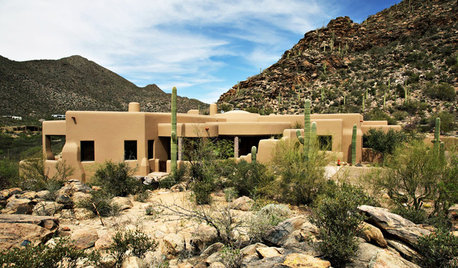


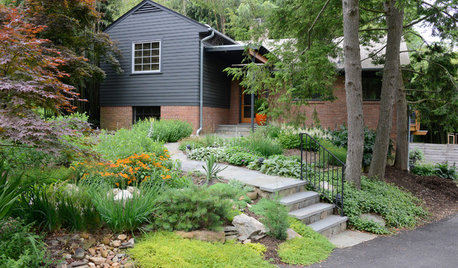


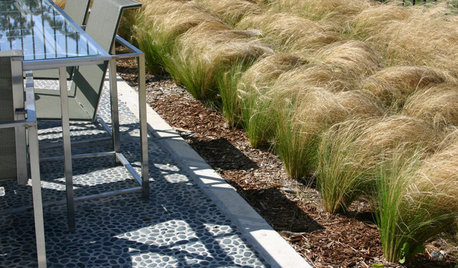











imyourhuckleberry